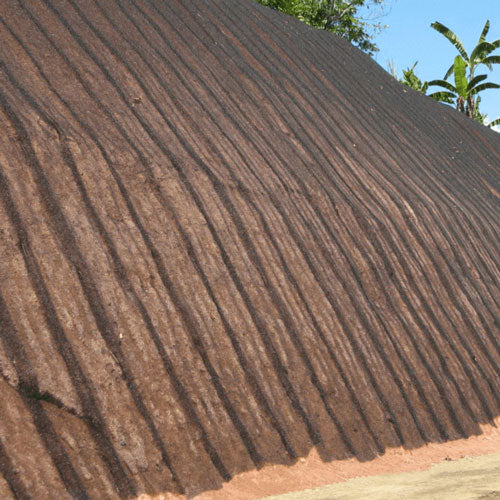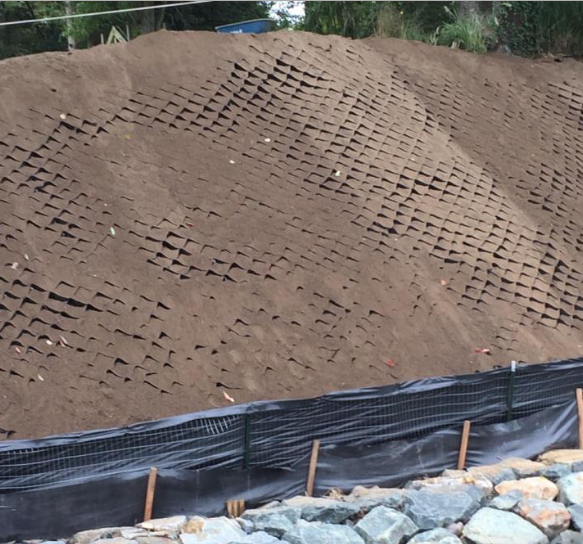Effective Erosion Control Methods for Lasting Land Monitoring
Are you looking for methods to successfully take care of erosion on your land? Discover the various types of disintegration and their effect on your land, as well as natural approaches to manage disintegration. Discover how to carry out effective disintegration control procedures and ensure correct tracking and maintenance.
Value of Erosion Control in Sustainable Land Monitoring
Because it assists avoid dirt degradation and loss,Disintegration control is vital for sustainable land administration. By implementing efficient erosion control methods, you can ensure the long-term health and performance of your land. Without appropriate erosion control actions, dirt disintegration can happen, leading to the loss of important topsoil that is rich in nutrients necessary for plant growth.
Because it assists to maintain dirt fertility,One of the main factors disintegration control is vital is. When soil wears down, it eliminates the raw material and nutrients that plants need to prosper. This can result in reduced crop yields and lowered performance of the land. Furthermore, erosion can result in sedimentation in neighboring water bodies, which can adversely influence water ecological communities.
Another secret advantage of erosion control is the prevention of land destruction. Disintegration can create the loss of essential topsoil, which takes years to form normally. This loss of topsoil can result in unsuccessful and barren land, making it tough for plants to grow and for ecosystems to flourish. By carrying out erosion control techniques such as terracing, contour plowing, and using cover plants, you can aid protect against land deterioration and preserve the health of your land.

Sorts Of Erosion and Their Influence On Land
Understanding the numerous kinds of disintegration and exactly how they impact the land can help you execute far better land monitoring practices. Erosion is the process by which dirt, rocks, and other materials are gradually deteriorated and transferred by natural forces such as wind, water, and ice. There are 4 primary kinds of disintegration: sheet disintegration, rill disintegration, gully disintegration, and mass movement disintegration.
Sheet erosion occurs when a slim layer of soil is removed evenly from the surface area of the land. This kind of erosion is usually created by hefty rainfall or inappropriate land monitoring methods such as overgrazing or deforestation. Rill disintegration, on the various other hand, happens when small networks or rivulets are formed on the land because of the flow of water. This can happen on high slopes or locations with compacted soil.
When larger gullies or channels are formed due to the constant circulation of water,Gully disintegration is much more severe and occurs. This kind of disintegration can cause substantial damage to the land, causing loss of topsoil and vegetation. Finally, mass motion disintegration refers to the motion of big amounts of dirt and rocks downhill due to the force of gravity. This can happen in the form of landslides or dropping.
Comprehending these various sorts of disintegration and their impact on the land is vital for efficient land administration. j&j lawn care and landscaping By applying erosion control strategies such as terracing, shape plowing, and reforestation, you can lessen erosion and protect the honesty of the land. Furthermore, practicing good land management techniques like appropriate plant rotation, maintaining ground cover, and using sediment control steps can even more help in preventing disintegration.
All-natural Disintegration Control Techniques for Sustainable Land Management
By executing natural disintegration control techniques, you can successfully preserve the honesty and take care of of your land. One reliable technique is using plant life, such as plants and lawns, to support dirt and stop erosion. Planting indigenous types can help enhance root thickness and bind the dirt together, lowering the threat of disintegration brought on by hefty rainfall or wind (Memphis Erosion Control Solutions erosion control company). Furthermore, mulching is another natural strategy that can help regulate erosion. By using a layer of natural mulch, such as wood chips or straw, you can shield the soil from the effect of raindrops, reducing dirt compaction and runoff. An additional all-natural disintegration control technique is contouring the land. By developing contour lines or balconies on inclines, you can reduce down the circulation of water and allow it to permeate the dirt, reducing erosion. In locations where disintegration is concrete curbing contractors a considerable worry, installing erosion control blankets or mats can be valuable. These mats are constructed from biodegradable products and help support the dirt till vegetation is established. On the whole, by utilizing these natural erosion control techniques, you can properly manage and safeguard your land from disintegration, guaranteeing its long-term sustainability.
Carrying Out Efficient Erosion Control Measures

One such approach is the use of disintegration control coverings. Additionally, planting greenery is a critical action in erosion control. By carrying out these shown erosion control methods, you can successfully shield your land and minimize the danger of disintegration and its detrimental impacts.
Surveillance and Maintenance of Disintegration Control Strategies
When tracking and keeping erosion control actions, it is very important to consistently evaluate the erosion control blankets, balconies, plants, and sediment control measures to ensure they are operating properly and effectively preventing disintegration (Memphis Erosion Control Solutions hydroseeding). By carrying out normal assessments, you can identify any kind of issues or deficiencies in the erosion control methods and take necessary activities to fix them
Begin by checking the disintegration control coverings. See to it they are firmly anchored and cover the intended areas with no gaps. Look for signs of damages or wear, such as tears or check over here subjected dirt. Replace or fix any type of damaged blankets promptly to keep their efficiency.
Following, inspect the terraces. Look for signs of erosion, such as debris accumulation or uneven surfaces. Ensure that the terraces are effectively made and preserved to draw away water circulation and reduce erosion. Clear any type of gathered debris to maintain their performance.
Evaluate the plant life in the erosion control location. Proper plants coverage assists stabilize the soil and stop disintegration.
Finally, evaluate the debris control measures, such as sediment containers or debris fences. See to it they are correctly mounted and working as meant. Remove any built up debris and make certain that the controls are effectively maintained.
Normal monitoring and maintenance of erosion control procedures are essential for their long-term effectiveness in preventing disintegration and keeping lasting land management methods.
Conclusion
In conclusion, you must prioritize disintegration control for sustainable land monitoring. By recognizing the different types of erosion and their effect on the land, you can implement efficient all-natural disintegration control approaches.
Discover the various types of erosion and their impact on your land, as well as all-natural techniques to regulate erosion. There are four main types of erosion: sheet disintegration, rill disintegration, gully disintegration, and mass activity erosion.
By carrying out disintegration control techniques such as terracing, shape plowing, and reforestation, you can lessen disintegration and preserve the honesty of the land (Memphis Erosion Control Solutions silt fences). On the whole, by using these natural erosion control approaches, you can efficiently manage and shield your land from disintegration, guaranteeing its long-term sustainability
By understanding the different kinds of disintegration and their effect on the land, you can carry out reliable all-natural disintegration control approaches.